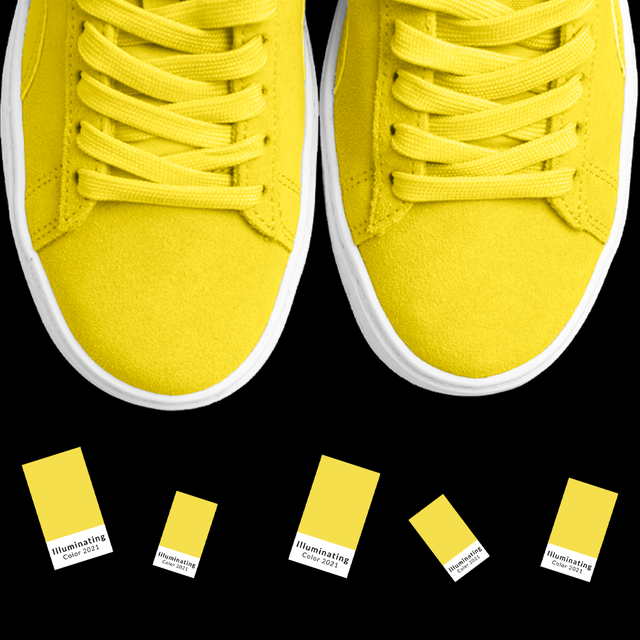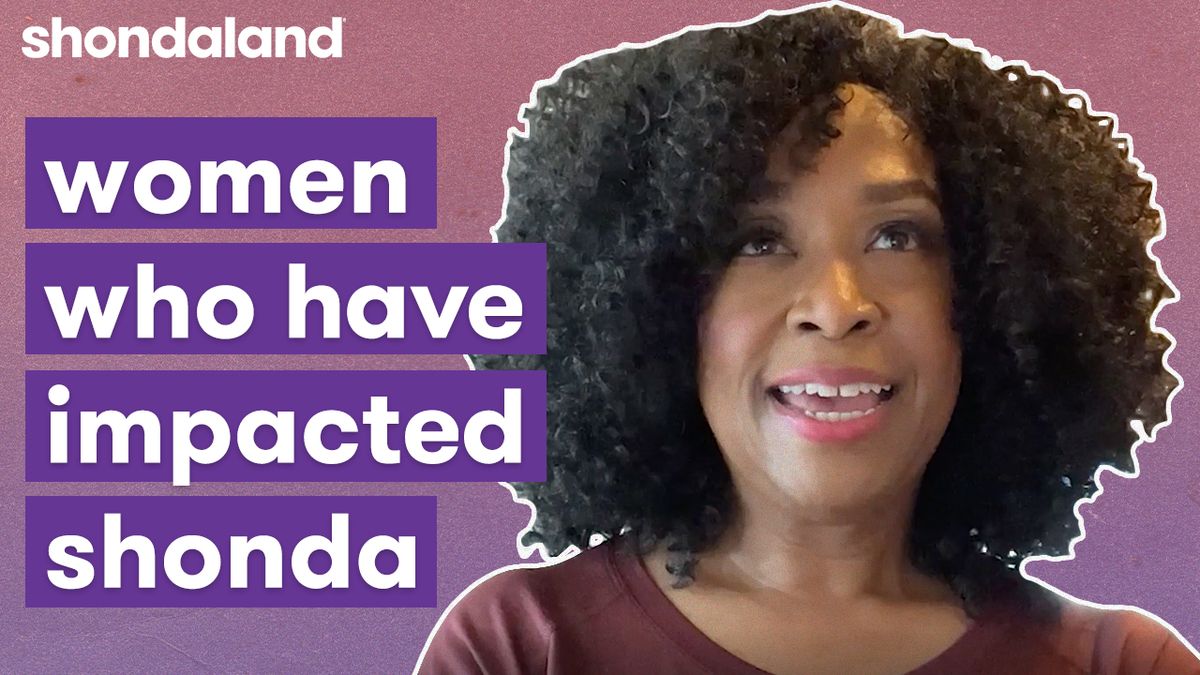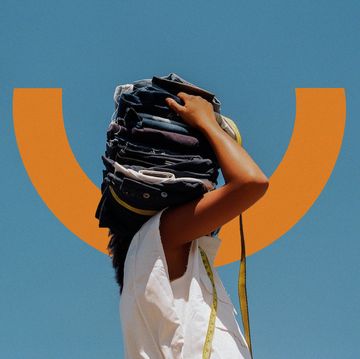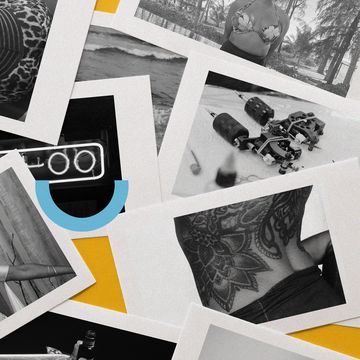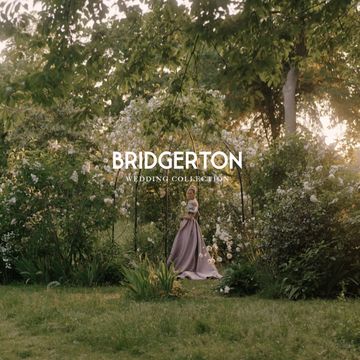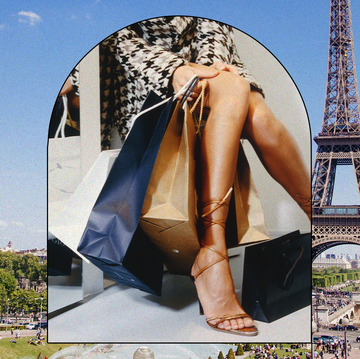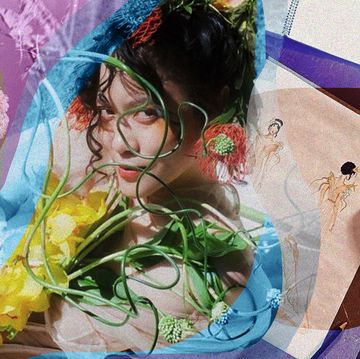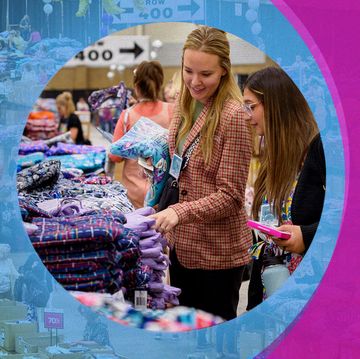During heightened times of uncertainty or turmoil, wearing colorful clothes can act as an antidote to psychological discomfort. “Color can lift your mood,” says Jane Boddy, a color expert based in the U.K. Psychological research has also proved this.
Boddy says it’s only in the past seven years or so that color in fashion has become such a constant focus, with much of its impact driven by the overwhelming success of millennial pink, a pale pink that’s thought to have picked up steam when Apple released the first rose gold iPhone in 2015 (the iPhone 6).
Color and emotion are distinctly related. Why? Wearing different colors can help us call in specific feelings energetically. “Color is energy,” says Susanna Merrick, an aura stylist based in New York. The effect of color on emotion is more or less the basis of Merrick’s work.
As an aura stylist, Merrick believes that dressing according to one’s aura is an intentional act of self-care; she helps clients sort out their emotions, their closets, and their style. “Color is a powerful tool to help us reflect within as well, whether we have associations with color since childhood or color truly holds properties of emotions we don’t fully know,” she says.
Lately, Merrick has been seeing lots of shades of violets, purples, and greens growing in popularity. “Violet is about vision, humanity, and intuition,” she says. “Its futuristic, energetic exchange makes us feel creative and otherworldly.” It’s dreamy and gives us a little day trip from when we’re sad or stressed.
Although many of us have not been leaving our homes much over the past year, we can still throw on something bright (and obviously comfy) while doing online classes, working remotely, or, of course, TikToking. “People, at this moment, definitely are looking for color as [a way to help] people feel good about themselves,” says Boddy. “The key topics at the moment are wellbeing, comfort, and sustainability.”
“The other thing that’s really important about these colors is that they really connect strongly to the whole loungewear and soft-dressing movement, which is huge at the moment,” says Boddy. She considers these colors calming, soft, and sophisticated.
Pale cornflower, pale citron, pale electric apricot, and a neon version of Naples yellow are some of the hues to watch this season, according to Keith Recker, editor in chief of Table magazine and the author of True Colors: World Masters of Natural Dyes and Pigments. “These hues can vibrate with their own energy, and they take you with them. They are not protective shields like black and dark blue, but rather emitters and receivers of fun, delight, innocent pleasures,” he says.
“The ‘high tech’ pastels are very antidepressant, and very ready to take us into warmer weather,” Recker says. Pantone’s choice of yellow as one of the colors of the year aptly reflects this. “The sunshine delivered by yellow is much needed, and it was a wise choice,” he adds.
There’s also the sustainability mood, expressed in simple, natural tones that communicate the virtues of low-impact processes and materials, and longevity and enduring appeal. We all know we need to consume less, and passing our desires through that filter leads to simpler choices.
Currently, there are two color groups that are trending, according to Boddy: calming lounge tones and uplifting tones that make us feel good, which include pale green, neo mint, magenta, orchid, and sunny lime, marigold, and golden earth tones. Recker says that these colors show a “responsibility for body and planet, entwined with a deep need for satisfaction and delight, [and] form the invigorating duality right now.”
When it comes to sorting out which colors are trending, it’s all about being mindful, according to Recker. “It’s always about listening, and giving voice to, the messages in the air about the deep psycho-social needs starting to take root,” he says. “When you allow yourself to see those early signs, you’re on to something.”
Recker stays up to date on politics, spirituality, science, the art world, youth culture, and more to sniff out what trends might be approaching, but he doesn’t look much at fashion. “Once it appears as fashion, the flower has already bloomed. It’s there for everyone to see, adapt, copy … and time for me to refresh my sense of what’s next.”
“As for spring, the need for a bit of magic and imagination is going to infuse our choices,” Recker says. “As we start to intuit what the ‘new normal’ will be, I expect that dual impulses of healthy choices and a pent-up need for fun and celebration will find ways to work together and to play off of each other.”
Merrick recommends wearing shades of green to represent growth and wearing yellow to be playful and energetic as we head into warmer months. “I lovingly call green the ‘type A’ energy, and, since we’ve all been in hibernation for what feels like a lifetime, [wearing the color] green can [help] us get back out into the world,” she says. “Yellow, on the other hand, can help bring us out of a low vibrational energy state. Green has special healing effects, and wearing these colors can help nourish us. It can make you feel rejuvenated and renewed just by being in its presence.”
“[Color] is going to become more and more prevalent as we move through the next few decades,” says Merrick. “Energy and intuition are more deeply correlated with our choices in the way we dress and the colors we gravitate towards more than we ever previously thought.”
Getting dressed, even when you have nowhere to go, can be therapeutic, and, when you throw some thoughtful, colored clothes into the mix, it can help jump-start your day. There’s no better time to sift through your wardrobe, buy a few new items for spring and summer, and tap into the healing powers of different hues.
Sara Radin is a culture writer and editor based in New York.
Get Shondaland directly in your inbox: SUBSCRIBE TODAY
